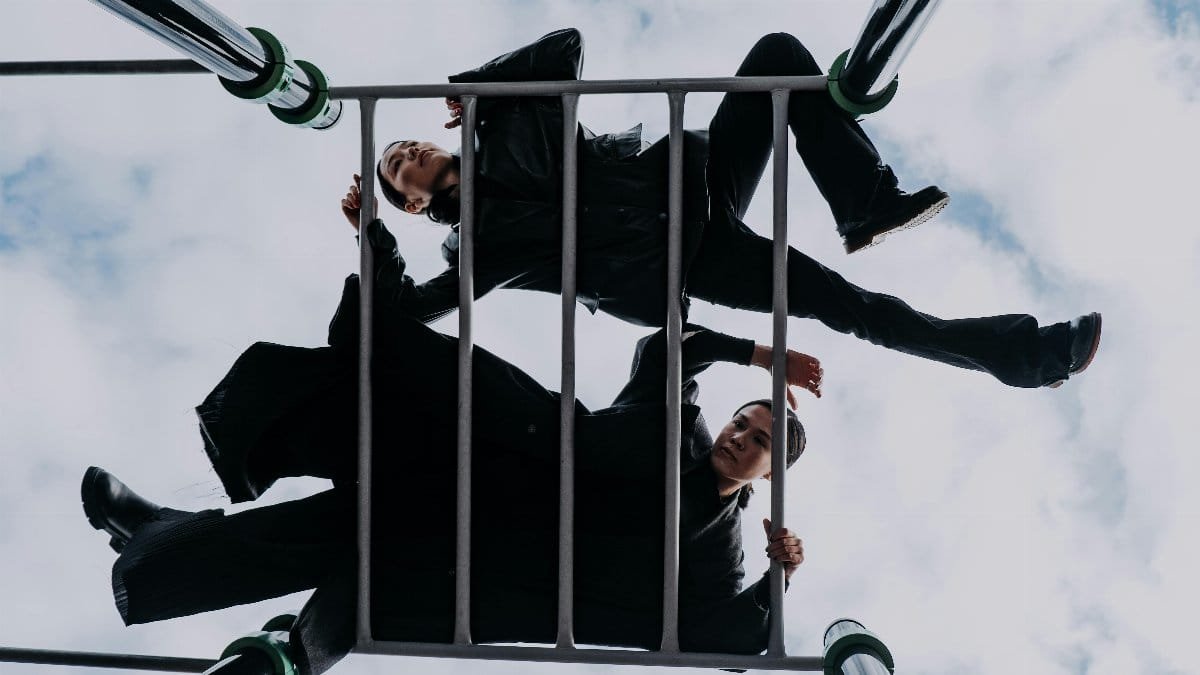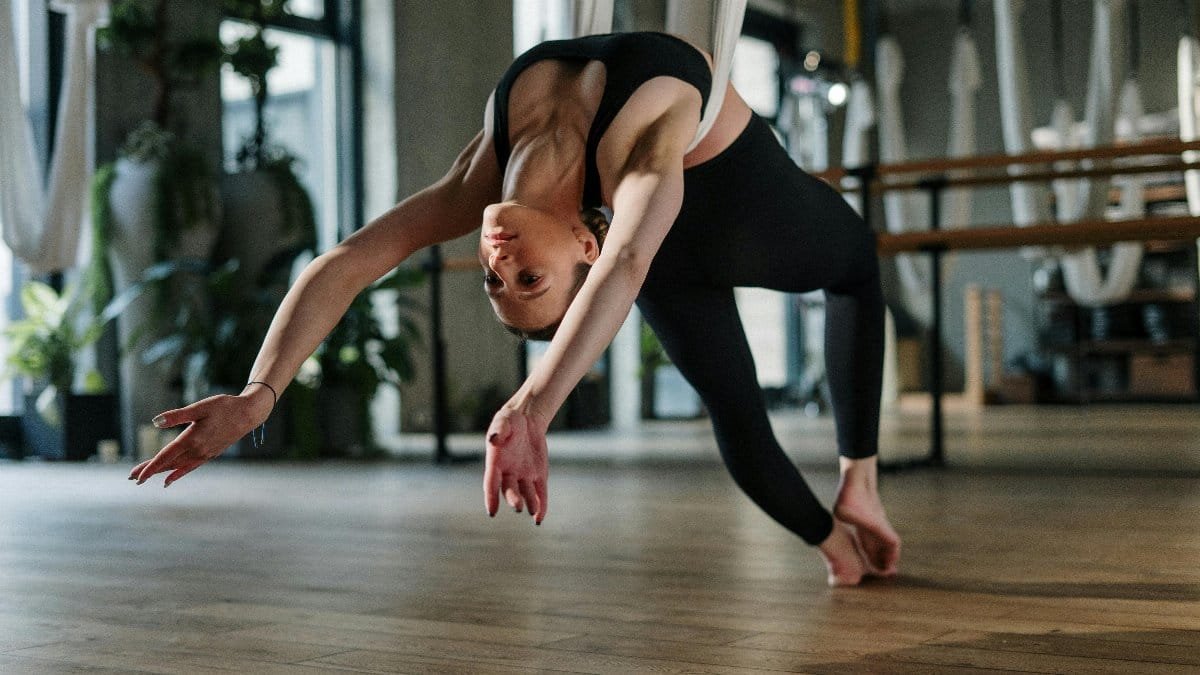Imagine a room where gravity seems negotiable. Adults dangle from vibrant silks, laughing as they twist into shapes that defy logic. This isn’t a circus rehearsal—it’s a fitness studio in Denver, where aerial yoga, a strength-building, gravity-defying, playful workout, is captivating a growing crowd. What started as a niche hybrid of yoga, acrobatics, and dance has morphed into a mainstream draw in 2025, promising not just toned muscles but a return to childlike wonder. For many, it’s a chance to break free from the monotony of traditional exercise, blending physical challenge with a rare sense of levity. Studios report waitlists stretching weeks, as middle-aged newcomers and seasoned yogis alike seek something different. How did hanging upside down become a wellness revolution? The answer lies in a unique mix of science, community, and sheer fun—a combination that’s redefining what a workout can be.
The Origins of a Skyward Trend

Aerial yoga didn’t emerge overnight. Its roots trace back to the early 2000s, when performers like Christopher Harrison, a former Broadway dancer, began experimenting with silks as a therapeutic tool. His creation, AntiGravity Yoga, blended traditional poses with aerial arts, initially targeting dancers recovering from injuries. The concept spread, fueled by a hunger for innovative fitness. By 2010, boutique studios popped up in cities like New York and Los Angeles, offering classes to anyone curious enough to try. Today, it’s no longer just for the artsy elite. Community centers and gyms across the U.S. now host sessions, reflecting a broader cultural shift toward experiential exercise.
What’s driving this in 2025? Part of it is sheer escapism. With stress levels still high post-pandemic, Americans are craving outlets that feel less like a chore. Aerial yoga delivers—literally lifting participants off the ground. As one instructor in Chicago noted, “People walk in tense, but they leave giggling. It’s magic.”
Strength in Suspension: How It Works

At its core, aerial yoga uses a hammock-like silk suspended from the ceiling to support the body during poses. Think downward dog, but with fabric cradling your hips, or a warrior pose while partially floating. The setup isn’t just for show—it’s a game-changer for building strength. Holding yourself steady midair engages core muscles in ways a mat can’t replicate. A study from the National Institutes of Health highlights how suspension training amplifies muscle activation, particularly in the abs and back, compared to ground-based exercises.
But it’s not all grit. The silk allows for deeper stretches, easing joint pressure while still demanding effort. Participants often report feeling stronger within weeks, even if they’ve never lifted a weight. It’s a sneaky kind of power—one that builds as you play.
Defying Gravity, Embracing Play

There’s something inherently freeing about an aerial yoga strength gravity defying playful workout. Picture a 50-year-old accountant swinging gently in a silk cocoon, grinning ear to ear during a cool-down. It’s not uncommon. Unlike the stoic focus of a typical yoga class, aerial sessions often buzz with laughter. Instructors encourage experimentation—flip upside down, try a silly pose, let go of perfection. This playfulness isn’t just a bonus; it’s a mental reset. Research from American Psychological Association suggests play reduces cortisol levels, combating stress in ways structured exercise sometimes misses.
For many, it’s a return to childhood. One participant in a Seattle studio shared, “I haven’t felt this light since I was on a playground swing. It’s like I’m 10 again.” That emotional lift keeps people coming back, even when their muscles ache.
A Low-Impact Powerhouse

Don’t let the fun fool you—aerial yoga packs a punch without punishing the body. For middle-aged adults, especially those with joint issues, the appeal is obvious. The silk supports much of your weight during poses, reducing stress on knees and wrists. Yet, you’re still working hard. Balancing in the air forces smaller stabilizing muscles to fire up, improving overall coordination. A report by Harvard Health underscores how low-impact activities like this can enhance strength and flexibility without the wear and tear of high-intensity options.
In practice, it feels less like a grind. A woman in her late 40s at a Minneapolis class described her first session: “I thought I’d be sore for days, but I just felt stretched out and energized.” Her story echoes a common sentiment—accessibility meets challenge, making it a fit for varied fitness levels.
Community in the Air

Beyond the physical, aerial yoga fosters connection. Classes often cap at small numbers due to equipment limits, creating an intimate vibe. You’re not just working out; you’re spotting each other, cheering clumsy attempts, sharing a unique struggle. In an era when loneliness remains a public health concern, as noted by the Centers for Disease Control and Prevention, these micro-communities matter. Studios become safe spaces to laugh at yourself, to bond over a shared, slightly absurd experience.
Online, too, the community thrives. Anonymous accounts often reveal how aerial yoga shifts perspectives. One person shared publicly that they felt “part of something bigger” after just a few classes, a sentiment that resonates with the growing need for belonging in 2025. It’s not just exercise—it’s a social lifeline.
Challenges and Misconceptions

Still, aerial yoga isn’t without hurdles. First-timers often hesitate, assuming it’s only for the hyper-flexible or fearless. Truth is, most classes cater to beginners, with instructors adjusting poses for comfort. Fear of heights can also loom large. Yet, silks are typically hung just a few feet off the ground, and safety protocols are strict. It’s less about daredevil stunts and more about controlled movement.
Cost is another sticking point. Drop-in classes can run $20 to $40, pricier than a standard gym session. For some, it’s a barrier; for others, the unique benefits justify the splurge. Studios often offer packages or memberships to ease the sting, but accessibility remains a conversation worth having as the trend grows.
Finding Your Place in the Silks

Curious to try an aerial yoga strength gravity defying playful workout? Start small. Look for beginner classes at local studios or community centers—many offer introductory sessions to test the waters. Wear comfortable, fitted clothing (loose shirts can tangle in silks), and leave jewelry at home. Most importantly, go in with an open mind. You don’t need to nail every pose on day one. The learning curve is part of the charm.
Instructors often remind newcomers that it’s about progress, not perfection. A studio owner in Austin put it best: “Some people find their stride in a week; others take months. Either way, you’re getting stronger.” That patience pays off, both in body and spirit.
The Bigger Picture: Why It Matters Now

Step back, and aerial yoga reflects a broader hunger in 2025. Americans are rethinking wellness, seeking balance over burnout. Traditional gyms still have their place, but there’s a pull toward movement that feels alive, personal, even a bit whimsical. Aerial yoga, with its strength-building, gravity-defying, playful workout ethos, fits that craving. It’s not just about fitness—it’s about rediscovering joy in motion, something many of us lose as adults.
Will it stick as a staple? Hard to say. Trends evolve fast. But for now, as more people step into studios and hang from silks, they’re rewriting what a workout can mean. It’s a reminder that sometimes, the best way forward is to let go—and rise.
